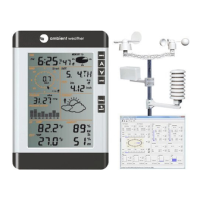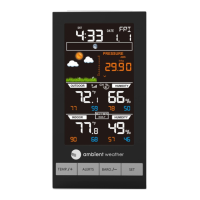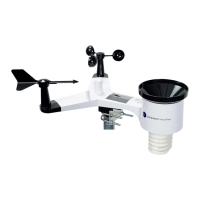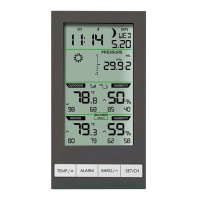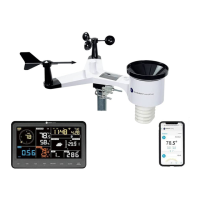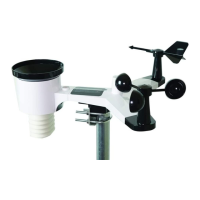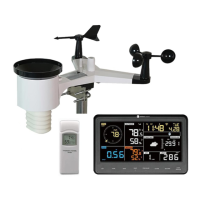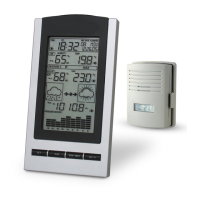Version 2.12 ©Copyright 2020, Ambient LLC. All Rights Reserved. Page 3
home.
Warning: Installing your weather station in a high location may result in injury or death.
Perform as much of the initial check out and operation on the ground and inside a building or home.
Only install the weather station on a clear, dry, day.
3. Quick Start Guide
Although the manual is comprehensive, much of the information contained may be intuitive. In
addition, the manual does not flow properly because the sections are organized by components.
The following Quick Start Guide provides the necessary steps to install and operate the weather
station, and upload to the internet, along with references to the pertinent sections.
4. Pre-Installation Checkout and Site Survey
4.1 Pre Installation Checkout
Before installing your weather station in the permanent location, we recommend operating the weather
station for one week in a temporary location with easy access. This will allow you to check out all the
functions, ensure proper operation and familiarize you with the weather station and calibration
procedures.
4.2 Site Survey
Perform a site survey before installing the weather station. Consider the following:
1. You must clean the rain gauge every few months and change the batteries every 2-3 years.
Provide easy access to the weather station.
2. Avoid radiant heat transfer from buildings and structures. In general, install the sensor array at
least 5’ from any building, structure, ground, or roof top.
3. Avoid wind and rain obstructions. The rule of thumb is to install the sensor array at least four
times the distance of the height of the tallest obstruction. For example, if the building is 20’
tall and the mounting pole is 6’ tall, install the sensor array 4 x (20 – 6)’ = 56’ away.
4. Mount the sensor array in direct sunlight for accurate temperature readings.
5. Installing the weather station over sprinkler systems or other unnatural vegetation may affect
temperature and humidity readings. We suggest mounting the sensor array over natural
vegetation.
6. Wireless Range. Radio communication between receiver and transmitter in an open field can
reach a distance of up to 330 feet, providing there are no interfering obstacles such as
buildings, trees, vehicles and high voltage lines. Wireless signals will not penetrate metal
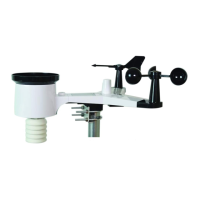
